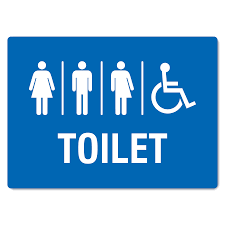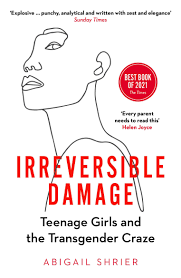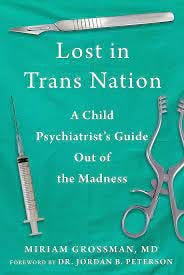The statistics we are not allowed to know
Two years ago, Education Aotearoa (the former name of Resist Gender Education) sent an Official Information Act request to all NZ intermediate and secondary schools asking for statistics on the number of transgender students on their rolls. We wanted baseline data to help everyone to understand some basic facts about youth trans identification because the Ministry of Education does not collect this information.
We asked:
how many students on the school’s roll claim a transgender identity
when trans identification first surfaced in a school and whether numbers are increasing
whether boys or girls are more commonly affected and in what age groups
whether there are geographical, ethnic, or socio-economic influences
what adaptations schools have made to accommodate transgender students
what support schools would like from the MOE to help them to manage demands from trans-identifying students.
Of the 582 emails sent, we received 96 replies answering our questions, but 40 schools refused to answer on privacy grounds, some adding a dose of invective about ‘transphobia’ as well. (We suspect the remaining 400 or so emails went to spam and were largely unread.)
The Ombudsman rules
Education Aotearoa complained to the Ombudsman about the school refusals to answer the OIA and it has taken over a year for a decision to be reached. The Ombudsman’s final ruling is that the schools were justified in refusing to answer our questions on the grounds of privacy because disclosing the data would undermine confidentiality and students’ trust in their teachers. “The number and ethnicities of young people who identify as gender diverse are attached to individuals whose experience of how their school collects, stores, and uses their information will impact on their wellbeing and ability to trust education professionals in future,” the ruling said.
We strongly dispute the Ombudsman’s decision, but cannot appeal it. Our OIA sought only numbers in each school of students who were actively seeking accommodations for their trans or non-binary identity, and all the data was to be collated into an anonymised nationwide report. It would have been impossible for individual schools, let alone individual students to be identified.
Additionally, one of our team who has a trans-identified child describes the Ombudsman’s belief about expectations of confidentiality as an unfounded generalisation that is contradictory to the experience of parents of these children. “When students have asked for teachers to use their preferred names and pronouns at school (in front of their classmates), they have concurrently, or earlier, done the same at home, with wider whanau, at work, and consistently on social media,” she said.
The Ombudsman and the Privacy Commissioner, whom he consulted, both think that knowing the baseline number of trans-identifying young people would be harmful to their mental health, but RGE argues that withholding that knowledge is where the harm lies:
If we do not know how many students are affected by transgender ideation, which cohorts or demographics are most affected, and whether or not the numbers are increasing, how can our education system provide the care and support our children (and parents) need?
By the numbers
Although the sample of schools that answered our questions is small, we are able to provide the following snapshot of the numbers of trans-identifying students in 96 NZ schools in November 2021.
Disclaimer: No definitive conclusions can be reached from this incomplete sample, apart from the fact that transgender identification was a fact in more than 70 NZ schools in 2021 and that declaring a non-binary identity was by far the most common choice.*
*It is fair to assume that there were additional trans-identifying students in all the 40 schools that refused to answer the question, which is where we get the figure of 70+ schools affected.
School types: Not surprisingly, co-ed schools were most affected by student identity changes, but three single-sex girls schools reported they had transgender students enrolled, while none was reported in single-sex boys schools.
Geographic spread: We had expected to see the most transgender students in the main centres but some of the schools that had the highest numbers (8-16 students) were in provincial and rural areas.
Ethnic spread: The large majority of trans-identifying students were NZ European (65) with 17 Maori, and 4 each Pacifika and Other ethnicities. No conclusions can be drawn from these figures without knowing the overall ethnicities in the sample schools.
Primary inclusion
We did not send the survey to primary schools because, at the time, we thought transgender ideation was not affecting that age group. Since then we have learned that, in multiple primary schools, there are children as young as six adopting opposite sex identities, with challenging ramifications for the whole school community, as described in this testimonial:
My young son is being forced to change for swimming in a shared change room with a male-identifying female child. The son is aware that the other child is female and is at an age where he feels self-conscious about nudity in front of members of the opposite sex. Many parents of the same children are unaware that the child is female and no-one has been asked whether they consent to their sons sharing the purported single-sex change room with a female child. No consideration is made for the cultural and religious requirements of the other families, or the privacy and consent rights of the boys.
At a recent athletics day, sprints and all other competitions were run with boys and girls together, with students receiving individual score cards rather than being able to compare their abilities with others in their age and in their sex class. There was no prior discussion about this with parents and no request for feedback on the merits or not of this entirely new and debatable approach.
A growing number of parents of primary-age children are feeling alienated by their schools, which appear to be changing policies and practices by stealth, without robust and open debate about their merits and disadvantages. The new Minister of Education, Erica Stanford, has publicly commented on this rift, and we hope she will take urgent action to remedy it. (Write to her at erica.stanford@parliament.govt.nz)
School adjustments
Adaptations that schools had made were around using gender-neutral language, having uniform choices, and providing a range of bathroom and changing facilities. Some schools had proactively made these changes while others were waiting until a pupil with specific needs was enrolled. The majority of schools reported having no trans-identifying students and therefore making no changes.
However, the responses show that gender identity beliefs are entrenched in some schools. One school reported its having “six categories available for gender upon enrolment. We have gender neutral toilets, We have a rainbow club at school and support PRIDE.”
Another school that refused to answer the demographic questions replied to the one about facilities by saying:
“Changed labels on doors of individual toilets to include female/male signs as well as wheelchair ones, so that everyone is able to use a toilet that does not identify them as being of one particular gender.”
One girls’ school has renamed its toilets as ‘Student toilets’. Another girls’ school no longer uses the word ‘girls’ in everyday interactions, instead saying “Hello team”, or “Follow me people” or even “Listen-up guys.” (This was reported separately from the survey.)
The thumb of InsideOUT
As soon as the survey was out, it was condemned in the media by InsideOUT which sent schools detailed advice on how to avoid answering it. We received many responses that were word for word taken from InsideOUT’s advice. For example, this disingenuous refusal to reply to the simple question of how many males and females were on the school roll (Question 1):
“The school does not hold or create records relating to the ‘sex’ of any person during the enrolment process. It’s not clear what this information is requesting. If your question relates to student gender, this information is already published by the MOE.”
The abusive messages we received from some of the schools and the insincere refusal to answer Question 1, indicate to us that ‘privacy’ is being used as a smokescreen for the real reason for refusing to answer the questions, which is an ideological desire to protect their practices from scrutiny.
What schools want
Many schools felt they were well-informed and able to manage gender identity student demands without needing more information from the Ministry of Education, but several did express a wish for more support:
Our current physical structure is not set up to support trans-identified students. Funding to support altering this would be a significant support.
A set of best practice guidelines would be useful.
Any and all help would be useful.
Expectations around gender related issues, sports teams and the like.
Ministry based policies around the care and wellbeing of transgender students and their families in a single-sex school.
We would like support for informing and educating the parent community as many of them are from a generation that doesn’t fully understand it yet.
This last request shows a condescending and disrespectful attitude towards parents. The school personnel are making presumptions about parental beliefs and are not acknowledging or accepting parental rights to make decisions about their children’s education.
Concerningly, nine schools wanted the MOE to change the way sex data is collected by schools:
The school would like the MOE to allow collection on more than ‘male’ and ‘female’ options to better reflect students’ genders and bring this in line with gender options available in the school system.
It is alarming that so many school leaders do not understand the difference between ‘sex’ and ‘gender’ and that the MOE is being put under pressure to preference ‘gender’ in its data collection. When data is collected by ‘gender’, it becomes compromised and educational disadvantages connected with the sex of students is hidden. If the MOE adopts this practice, we might learn there are hundreds or thousands of non-binary students in schools but we would no longer definitively know that fewer girls take science and maths subjects, nor that boys are more likely to have difficulty with literacy.
Conclusion
Despite the fact that this survey is two years old and limited by its small sample size, RGE believes it points very clearly to a major problem facing NZ schools: Gender identity beliefs have spread to children throughout the country - even to small rural areas and primary schools - and too many education professionals are complicit in endorsing this harmful ideological belief and embedding it into school policies, practices, and classroom lessons.
Recommended holiday reading
This is the last substack from RGE for 2023 but we will be back in February 2024. In the meantime, we highly recommend these books:














In this context does NZ mean New Zealand?